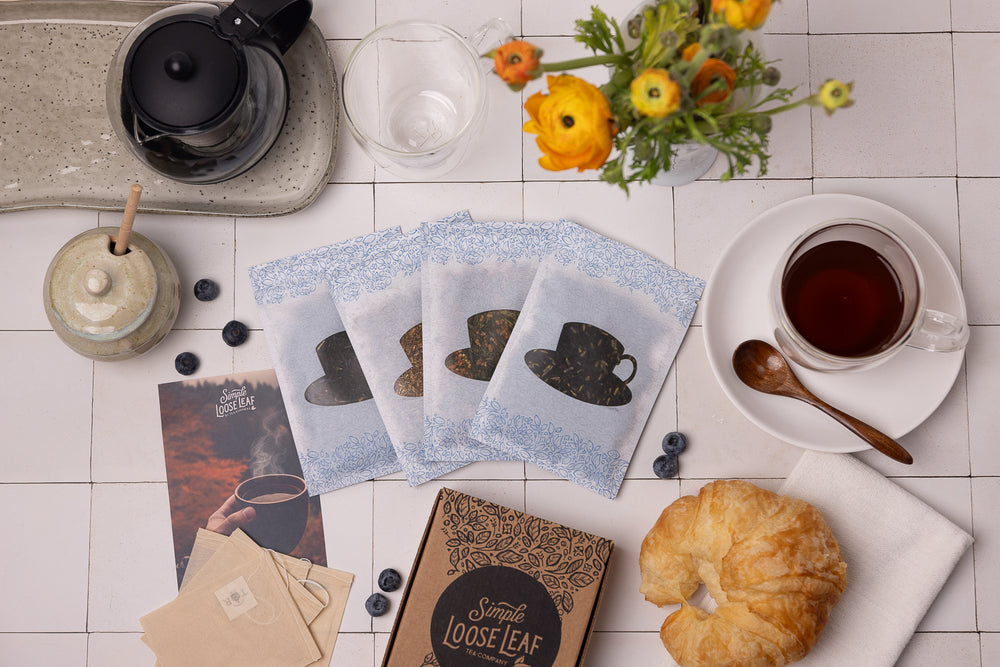How to Make Green Tea Taste Good
The main reason for avoiding green tea is the bitterness. Although most green teas may be bitter if over-brewed, that doesn’t mean you should give up on green tea completely. First, try with different types. For example, if over-brewed, sencha will be less bitter than gyokuro, bancha will be less bitter than sencha and hojicha will be less bitter than bancha. But if brewed correctly, gyokuro will give the best fullest and sweetest flavor. In fact, any green tea can be sweet too. Teas like Genmaicha or Kukicha are naturally less bitter. On the other hand, Gunpowder or Chun Mei are stronger green teas that will always give a stronger and lightly astringent cup. Flavored green teas are a great choice if you are just learning how to brew green tea properly. Fruits and flowers in blends will make astringency and bitterness less noticable, hidden behind delicious flavors.
Why does green tea taste bitter?
Almost any real tea can taste bitter when over-brewed, even herbal teas. Green and oolong teas are the most difficult tea types to brew. All green teas contain catechins, chlorophyl and caffeine, healthy, but bitter compounds. But mostly catechins are to blame for the bitterness in green tea. Even if you are drinking green tea for health benefits and your goal is to extract the most EGCg from tea leaves, avoid over brewing it. You will achieve the same result with re-steeping the same leaves, while avoiding bitterness and getting the best flavor.Easy ways to improve bitterness of green tea
1. Switch to loose leaf tea
The first secret to better taste is the type of tea leaves you are using. Your green tea may be bitter if you are using green tea bags instead of loose leaf teas. Tea bags contain dust and small tea particles that will release bitter (and other) compounds much faster than loose leaves.2. Steep with cooler water
One of the reasons why your green tea taste bitter could be the water temperature. If the water temperature is too hot, you will extract more catechins, caffeine, chlorophyll. Another compound in green tea is L-theanine, that gives a light savoury note, more noticeable when using cooler water. Never brew green tea with boiling water, especially not high quality ones, or you might end up with the same cup of tea as with the low quality leaves.3. Add less leaves
The more leaves you add, the more intense flavor you will get. 2-3 grams of green tea leaves will usually be enough for the best tasting cup of green tea.4. Don’t over-brew
Green tea is one of the most delicate tea types, so brew it with care. The more attention you give to brewing green tea, the better it will taste. Never steep green tea leaves for more than 2-3 minutes. For sencha, try to create a habit of brewing green tea in the eastern way – keep the first infusion at around 1 minute, and make second one only a few second long. For the third infusion, steeping time can be longer than one minute. With Chinse green teas, keep the steeping time for the first infusion at around 1 minute, and add 20-30 seconds to each subsequent steep.5. Drink while it’s still hot
Avoid drinking cold green tea unless you cold brew it. Cooled hot brewed tea will always taste more bitter that cool cold brewed tea. If the color of your tea changed to darker yellow or brown, use it for watering plants instead.6. Add lemon
Lemon juice is the best natural way of reducing bitterness in green tea. It can make any green tea taste better. Try not to squeeze lemon into a very hot tea and let it cool down for a minute or two first.7. Add honey
Although the high quality loose leaf green tea will always taste the best without adding any sweeteners, if all attempts to make your tea less bitter failed, try with honey. Although honey is much healthier than pure sugar, it can still lead to gaining weight, so use it reasonably.8. Use it for making iced tea
The best iced tea is made with a stronger brew, and a cup of overly bitter tea may serve as a perfect base. Fill your shaker with ice and add sweetener and tea. Shake for 30-60 seconds and pour into a glass.9. Turn it into a latte
Although the idea of a green tea latte may sound unappealing, if you are familiar with matcha latte, you may know how delicious it can be. Just like with iced tea, to make a tea latte you will need a strong brew as a base. And that’s exactly what an over-brewed green tea is. Simply warm up some milk and add to your tea. Add sweetener if needed.10. Add fruit jam
This may sound surprising at first, but fruit jam and green tea are a great match. Not only will you reduce bitterness, you will also get a fruit-flavored tea in a second. Choose clear jams without big chunks of fruit.11. Mix it with natural juice
Another way of getting a naturally flavored tea in a second is by adding a bit of natural sugar-free juice into your cup. You can do this with flavored teas too, but try to match the flavors of tea and juice to get the best taste.12. Cold-brew it
And finally, you can always avoid bitterness in any green tea by cold brewing it. Simpy add 1 spoon of tea leaves into a glass pitcher or teapot and add cold or lukewarm, but never hot water. Let it steep for 3-5 hours in the fridge. Drink it within 24 hours, because even this tea may become bitter if left to steep too long.
More from:
SLL




Leave a comment